Located near the largest city parks, directing its offer to both tourists and, as well, to those visiting Krakow on business, referring to local legends and showing that the old royal city today lives its own dynamic life – no wonder that the slogan “Urban Jungle” became the leitmotif of the interior design of the Hyatt Place Krakow hotel, created by MIXD.
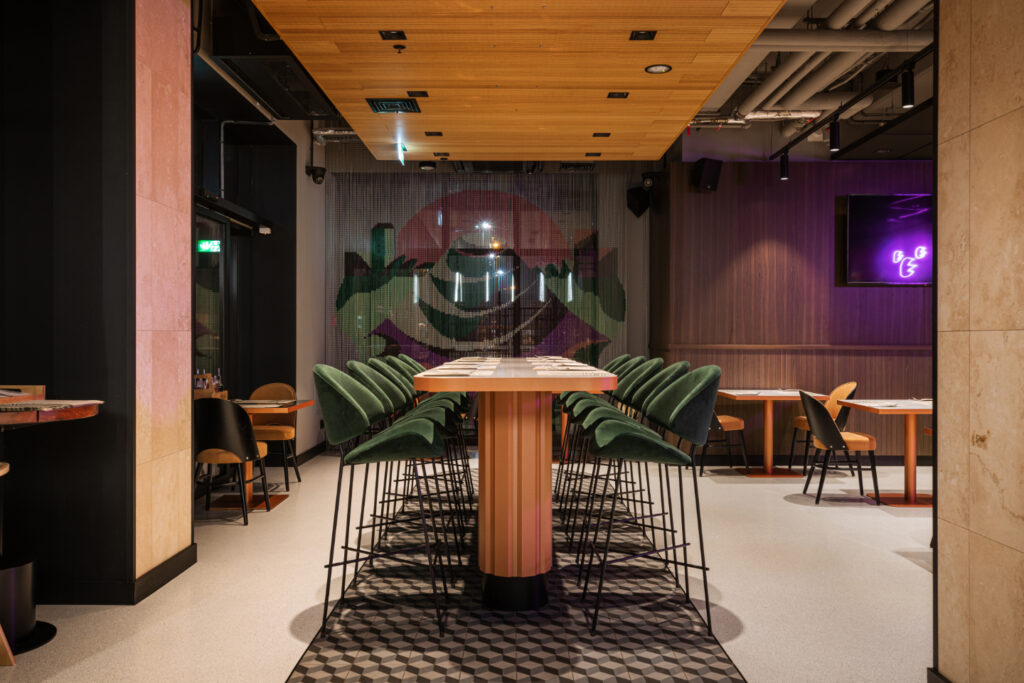
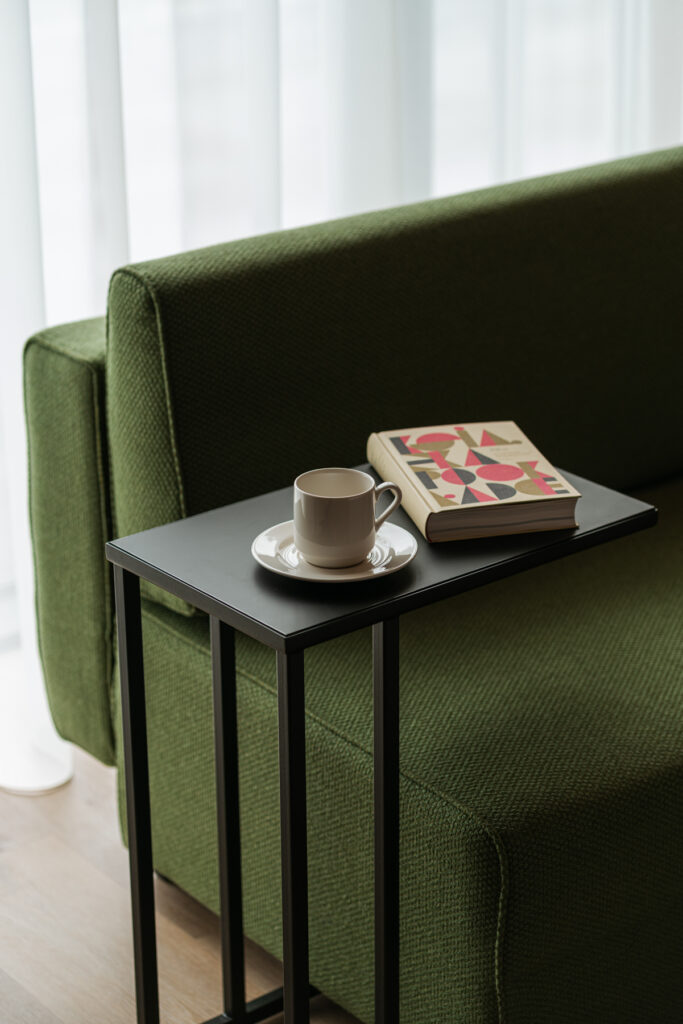
The opening of the hotel in Krakow was an important event, which is associated with both the expansion of the brand on the Old Continent and the return of the Hyatt chain to Poland after eight years. Therefore, the facility was to stand out with its design attract guests, and at the same time fully represent Hyatt Place – for example by referring to the colors from the brand’s palette. According to the investor’s wishes, local accents were to appear in the project but presented in a fresh way, attractive for the target group of Hyatt Place guests. The hotel was supposed to be urban, lifestyle, modern and elegant.

Embracing the ‘Urban Jungle’ motif has been more than a design choice for the interior visionaries at Hyatt Place. It acts as a unifying force, seamlessly weaving together the distinct features that define this extraordinary hotel. While Krakow boasts a remarkable and rich history, it’s not confined to the past. This city pulsates with a vibrant cultural life, thriving business endeavors, and advancements in science. People from around the globe visit not merely as tourists but to immerse themselves in the local scene – exploring clubs, reveling in the nightlife, attending concerts, participating in matches, and engaging in both research and business projects.

According to Piotr Kalinowski, CEO and artistic director of MIXD, Hyatt Place mirrors the authentic essence of Krakow. It doesn’t strive to artificially recreate a retro atmosphere; instead, it serves as a genuine reflection of the city’s contemporary spirit. Kalinowski shares, “We wink at hotel guests several times, referring to this slogan in the details of the interior. At the reception desk sits a monkey lamp from Seletti, the gym is guarded by a neon gorilla, and in the lobby, attentive guests will notice a light installation by artist Karolina Kowalska covered with a tropical leaves motif.”
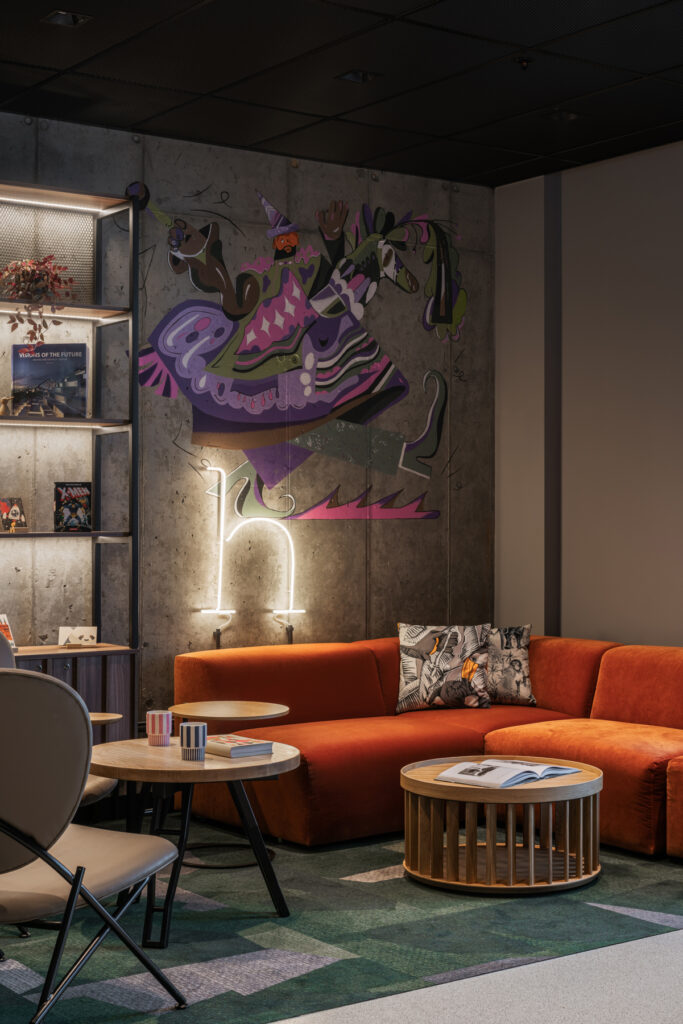
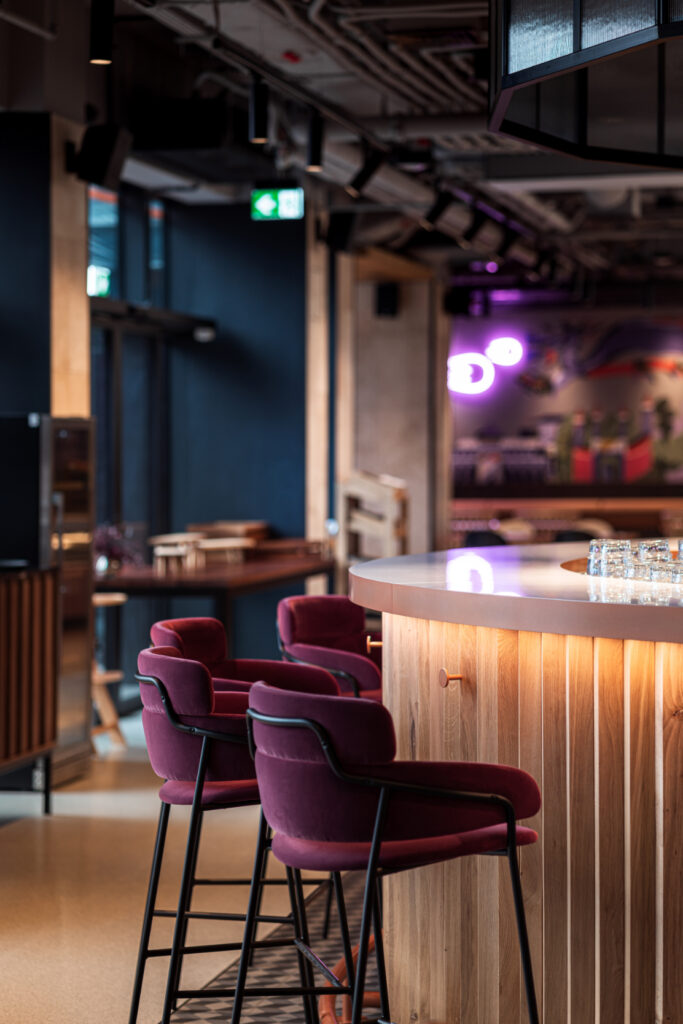
Hyatt Place Kraków’s interior design artfully plays with a myriad of contrasts. On one end of the spectrum, we immerse ourselves in the urban, industrial essence characterized by architectural concrete, resin, steel, metal mesh, and pressed sheet metal. Conversely, we’re met with the luxurious touch of elegant walnut wood, sandstone, travertine, and marble. The dynamic, vibrant, and colorful common areas stand in stark contrast to the serene ambiance of the conference rooms and relaxation spaces, creating a visually captivating and diverse experience for guests.
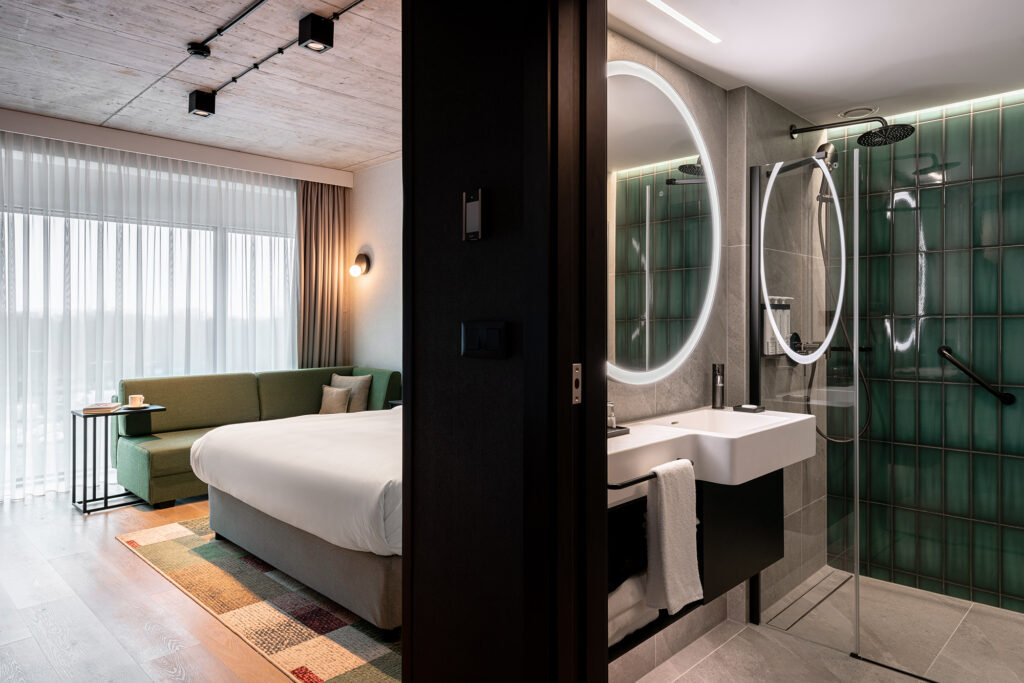
“The rooms, although much “calmed down” compared to the bar, restaurant or lobby, continue the thread of the discussion between the urban and coziness. We have comfortable beds, sofas, upholstered headboards, carpets, and above all, a bare concrete ceiling. The change of mood is also strongly signaled by lighting – from a mixture of various light sources with strong neon accents, we move on to a space with warm, ambient light, which the guest can easily adjust to their needs and activities. It’s like walking down a night street to your own home. We also put a lot of emphasis on the design of the bathrooms by the rooms – large, illuminated mirrors and individually designed washbasin equipment make the use of the bathrooms very comfortable,”
Marta Jakubas, Associate, Hospitality at MIXD
The hotel’s location next to Krakow’s Błonia and Jordan Park is excellent for those who enjoy morning jogs or have pets. Even though the hotel is in a quiet part of the city, it’s also well-connected and close to the Old Town, which is full of tourist attractions. The hotel embraces a green theme, as seen in the winter garden near the restaurant and the terrace covered in climbing plants. Green, along with purple, is a major color inside, appearing in furniture, graphics, and even on the reception desk made of green marble. This mix of colors gives a fairy-tale feel, like in a famous poem about a magical night in Krakow. Neon signs at the entrance and a ceiling inscription saying “Entrance” add to the urban night vibe, making them a vital part of the hotel’s design.
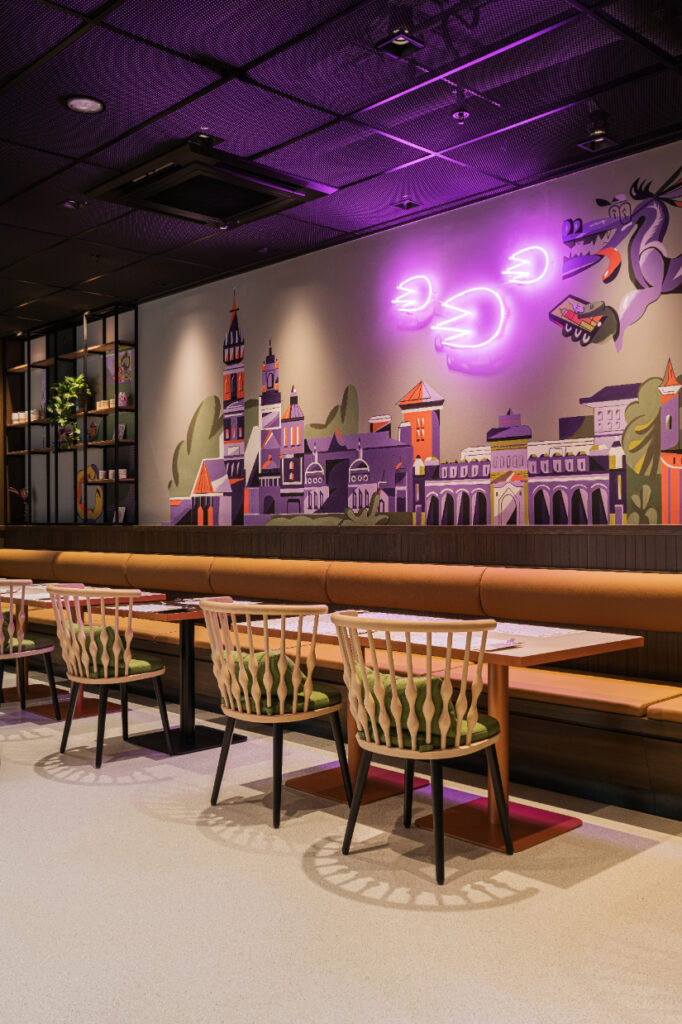
The art you see on the walls and the unique curtains made of metal chains in the hotel’s common areas are creations by the talented Polish graphic designer, Karol Banach. You’ll spot iconic symbols like the Wawel Dragon, Lajkonik, Krakow’s obwarzanki, Krak’s Mound, and St. Mary’s Church. These represent local legends and famous places in Krakow, presented in a fresh, light, and colorful way. As you explore further into the hotel, you’ll discover modern legendary spots like the Mocak museum, Cricoteka, the impressive Manggha building by the renowned Japanese architect Arata Isozaki, and the NOT office building, humorously nicknamed Skeletor by the locals. While the visual storytelling is undeniably Krakow, reminiscent of the tapestries in Wawel castle, Karol Banach’s murals offer a contemporary twist on this tradition, as Marta Jakubas eloquently puts it.
While most Poles go outside, Krakow inhabitants consistently go “in the field”. Probably the most popular phrase from the local dialect has become a decorative motif on the illuminated, openwork panels in the rooms. It can be read in many ways – it’s worth going into the city and enjoying its charms, it’s worth taking a walk around Krakow’s Błonia, and it’s worth using the hotel terrace – especially on warm spring and summer nights. The way is indicated by wayfinding designed by the MIXD graphic team – also using the theme of openwork numbers and letters. “We are proud that Hyatt entrusted us with such an important project for the brand and that we managed to meet the high requirements of this hotel chain. I believe that we have managed to create a place that is attractive to all visitors to Krakow and to tell an interesting story about this city, going beyond the usual patterns,” adds Piotr Kalinowski.
Photo credit: Mood Authors










